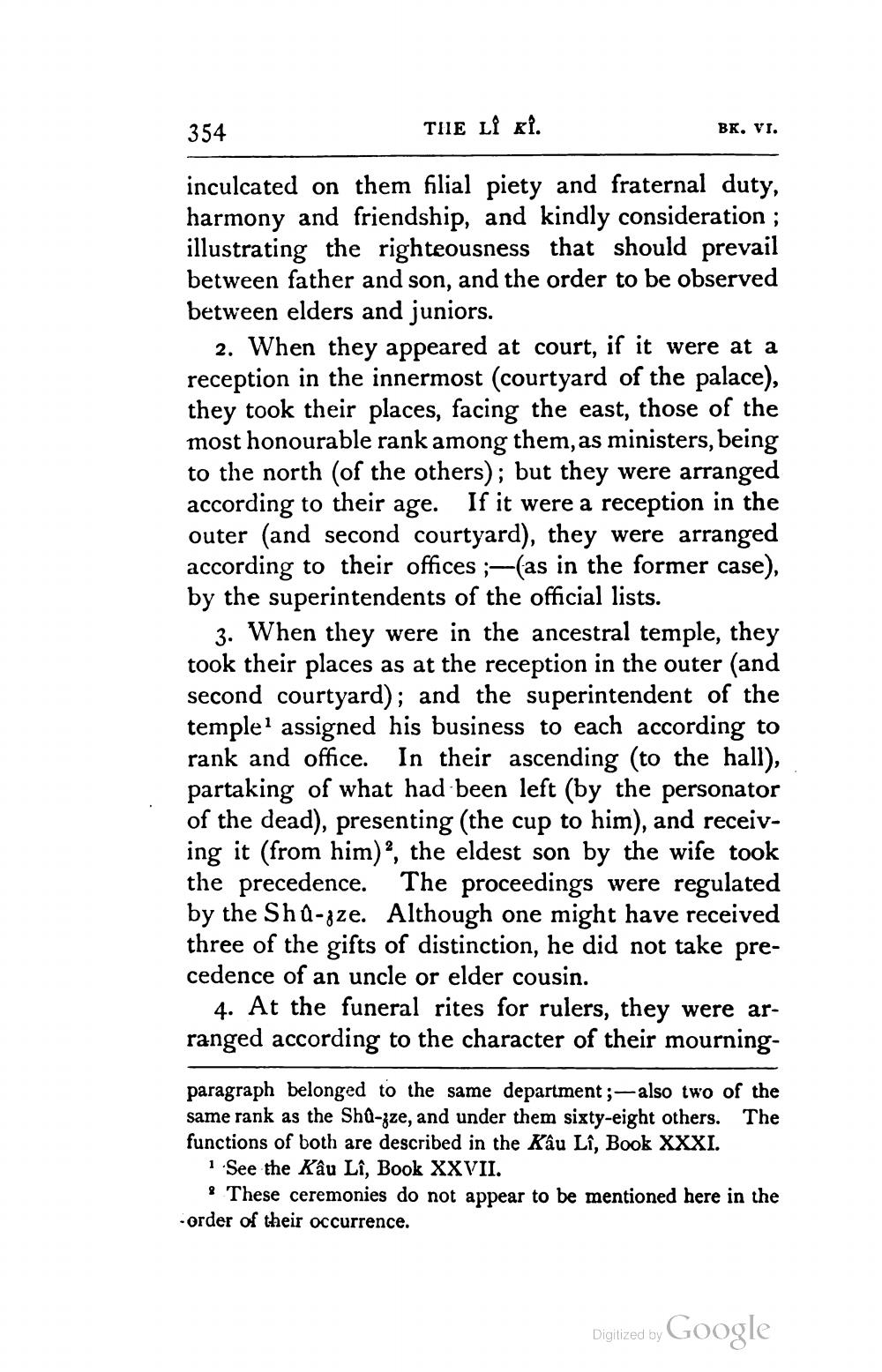________________
354
THE LÎ ki.
BK, VI.
inculcated on them filial piety and fraternal duty, harmony and friendship, and kindly consideration ; illustrating the righteousness that should prevail between father and son, and the order to be observed between elders and juniors.
2. When they appeared at court, if it were at a reception in the innermost (courtyard of the palace), they took their places, facing the east, those of the most honourable rank among them, as ministers, being to the north (of the others); but they were arranged according to their age. If it were a reception in the outer (and second courtyard), they were arranged according to their offices ;-(as in the former case), by the superintendents of the official lists.
3. When they were in the ancestral temple, they took their places as at the reception in the outer (and second courtyard); and the superintendent of the templeassigned his business to each according to rank and office. In their ascending (to the hall), partaking of what had been left (by the personator of the dead), presenting (the cup to him), and receiving it (from him), the eldest son by the wife took the precedence. The proceedings were regulated by the ShQ-gze. Although one might have received three of the gifts of distinction, he did not take precedence of an uncle or elder cousin.
4. At the funeral rites for rulers, they were arranged according to the character of their mourning
paragraph belonged to the same department;- also two of the same rank as the Shu-zze, and under them sixty-eight others. The functions of both are described in the Kâu Lî, Book XXXI.
1.See the Kâu Lî, Book XXVII.
. These ceremonies do not appear to be mentioned here in the -order of their occurrence.
Digitized by Google




